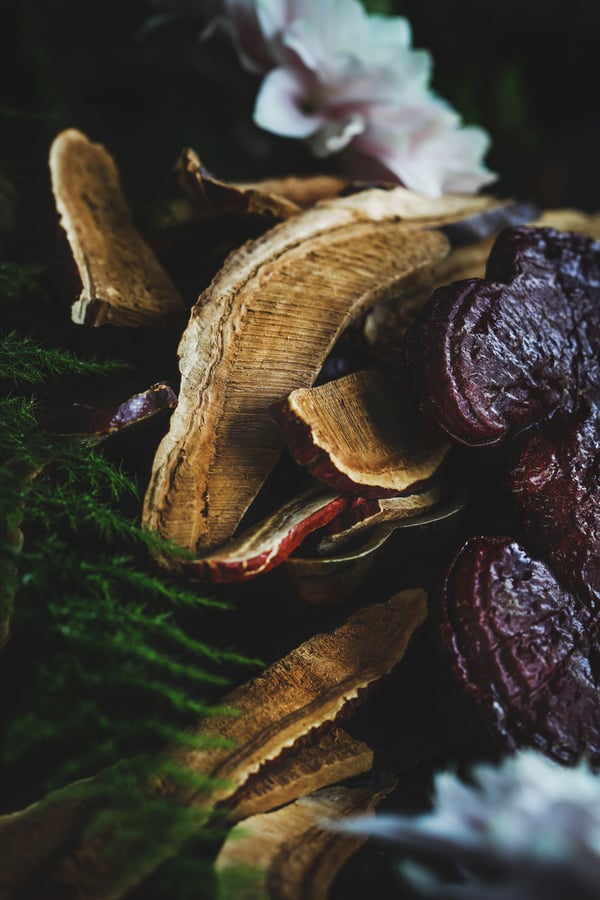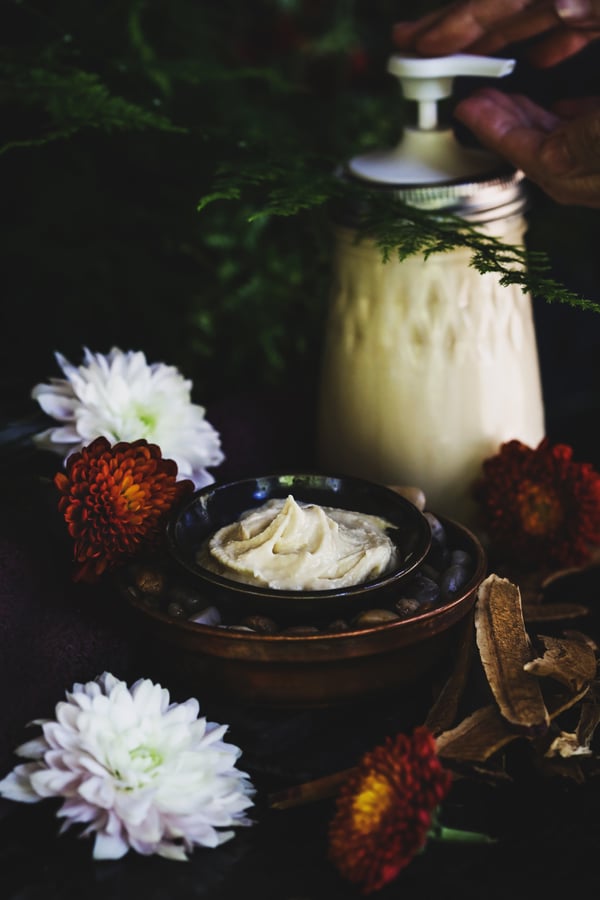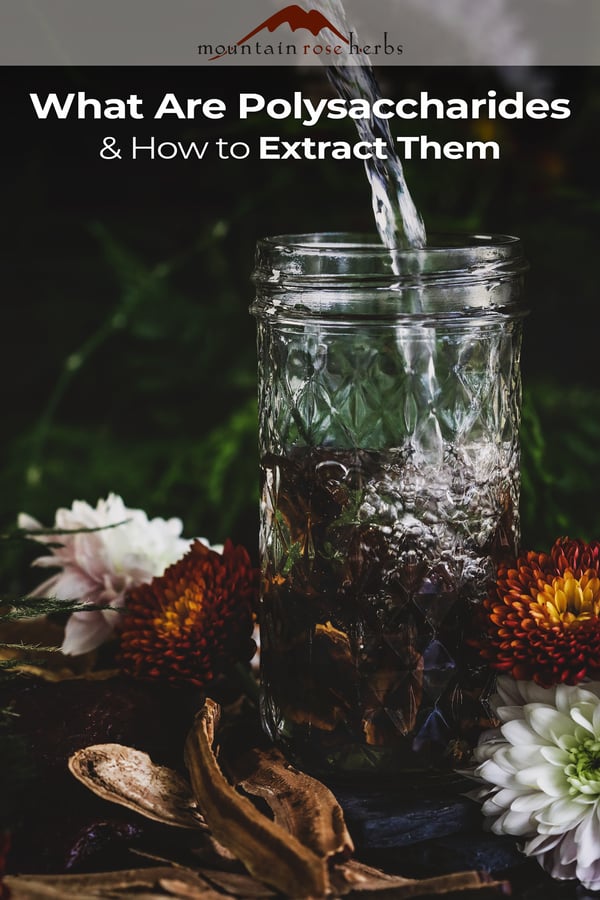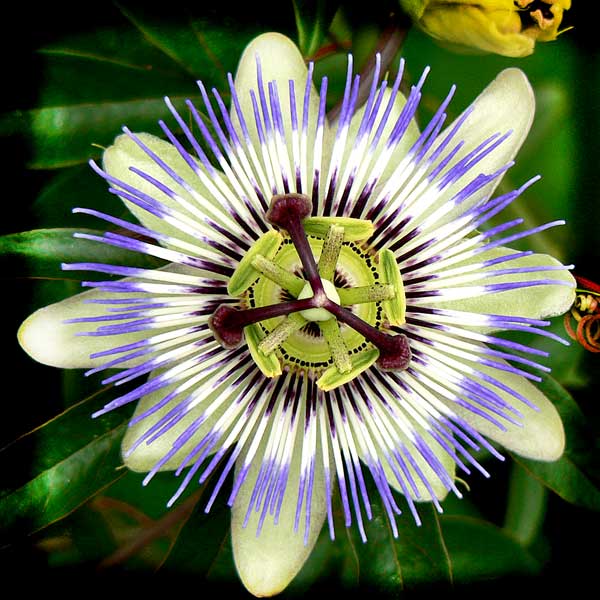In our continuing study of phytochemistry, let’s advance further with Polysaccharides. Studies show the many benefits of polysaccharides. They are immune modulating which means they help the immune system to regulate itself, whether stimulating or suppressing its actions. Polysaccharides stimulate the parasympathetic action to produce mucous, our body’s natural demulcent, to soothe dry, irritated tissues and assist in elimination. Contained in the primary cell walls of plants, polysaccharides act as a prebiotic, as most fiber does, to support beneficial bacteria and decrease non-beneficial bacteria. Serving as a soluble fiber, polysaccharides slow the release of glucose into the bloodstream as they enter the gut and bind bile acids. Bile acids then leave the body through the digestive system. Polysaccharides also prevent the absorption of cholesterol from food in the gastrointestinal tract and relieve constipation.
Molecularly speaking, polysaccharides are long-chain forms of carbohydrates. Monosaccharides, simple sugars such as glucose and fructose, are bound together by glycosidic bonds to form polysaccharides. There can be roughly 200-2500 monosaccharides in a polysaccharide chain. Beta-glucans, starch, cellulose, and glycogen are examples of polysaccharides.
As an aside, many drugs and poisons derived from plants are actually glycosides! Plants synthesize flavonoid glycosides in response to microbial infections.
Back to polysaccharides! Polysaccharide solubility is highly variable and determined by its molecular structure. For instance, the beta-glucans in Ganoderma mushrooms and the inulin in dandelion roots are extracted with simmering hot water. The polysaccharides in the “rubber band” in the center of usnea lichen must also be heated to be released. However, the immunomodulating polysaccharides in astragalus are extracted via cold water, and the soft-tissue-soothing mucilage in marshmallow roots is another type of polysaccharide that is best extracted with cold water. The polysaccharide pectin in both fresh rose hips and hawthorn berries is easily extracted in 80 - 100 proof alcohol tinctures.
An effective way to extract the polysaccharides (beta-glucans) in reishi mushrooms is to do the triple extraction method of tincturing.
How to Triple Extract Reishi Mushrooms
- 1st extraction is in alcohol. Finely chop or shred 1 ounce dried or 2 ounces fresh reishi in a half pint jar. Fill the jar with 190 proof (95%) alcohol. Label, cover, and allow to macerate for 48 hours. Press the alcohol from the mushrooms (wring in a nut bag, for instance) and set aside the alcohol in a lidded jar to be used in the 3rd extraction.
- 2nd extraction is in water: Place the reishi from the first extraction in a crockpot, cover with 4 cups water and allow to simmer on low for several hours. Watch carefully to ensure that the water doesn’t evaporate completely out. You’ll want to end up with 1/3 cup decoction.
- 3rd extraction is the combination of the 1st and 2nd extractions. Place the reishi mushrooms and decoction in a jar, leaving 1/3rd of the jar empty. Fill to the brim with your 1st alcohol extraction. Cover and allow to macerate for a few weeks. Press out the mushrooms. The resulting liquid is a triple extraction containing the volatile compounds, polysaccharides, triterpenes, fatty acids, and phenolic compounds.
Can we use mushrooms externally? But, of course! The beta-glucans and other polysaccharides in mushrooms stimulate immune and antioxidant activity and decrease puffiness. All good things! These constituents need heat to extract, which is why we make both a heat process mushroom oil and a mushroom decoction. The lotion smells fresh, not mushroomy, so don’t worry.
Smoothing Mushroom Face and Body Lotion
Excerpted from Wild & Beautiful: An Herbal Encyclopedia for Naturally Healthy Skin by Suzanne Tabert
Mushroom Herbal Oil:
Ingredients
- 2 cups organic olive oil
- 1 1/2 cup dried organic reishi mushroom slices
Directions
- Add oil and mushroom slices to a small crockpot.
- Turn the heat to low and allow the heat to infuse the skin-loving constituents into the oil for 24 hours.
- Strain and compost or upcycle your marc.
Mushroom Face and Body Lotion
Ingredients
- 1 oz. beeswax, grated or pastilles
- 2 Tbsp. unrefined shea butter or coconut oil
- 2 Tbsp. organic roasted cocoa butter
- 1 1/2 cup reishi-infused oil from above
- 2 Tbsp. organic sesame oil
- 2 oz. dried organic reishi mushroom slice
- 1 1/2 cups water
- 20 drops organic tangerine essential oil
- 10 drops organic nutmeg essential oil
- 5 drops organic lemongrass essential oil
- 5 drops organic cinnamon leaf essential oil
Directions
- Melt beeswax in a double boiler.
- Add shea and cocoa butters.
- When the butters are melted, take the pan off the heat and stir in the oils.
- Pour into a 4-cup glass measuring cup and allow to cool until the oils begin to solidify.
- Meanwhile, simmer reishi slices in 1 1/2 cups water until water is reduced to 1 cup.
- Strain into a 2-cup glass measuring cup and compost the mushrooms.
- Add essential oils to the decoction and set aside to cool.
- When beeswax has begun to solidify, use a stick blender and slowly pour the mushroom decoction and essential oils into the cooled oils, blending constantly, until the mixture is thick, creamy, and completely incorporated. This should take about five minutes. If the mix does not get creamy, it could be that the oils have not cooled enough. If this happens, let the mixture stand to cool more and blend again.
- Spoon or pour into jars. The cream will become thicker as it cools completely.
- Label jars and keep refrigerated for 3-6 months
Thank you all so much for journeying into plant constituents with me. Look for lessons on alkaloids, polyphenols and other flavonoids in upcoming posts. As always, I leave you Wild About Plants!
*The statements in this blog have not been evaluated by the Food and Drug Administration. These products are not intended to diagnose, treat, cure, or prevent any disease. We recommend that you consult with a qualified healthcare practitioner before using herbal products, particularly if you are pregnant, nursing, or on any medications. For educational purposes only.














